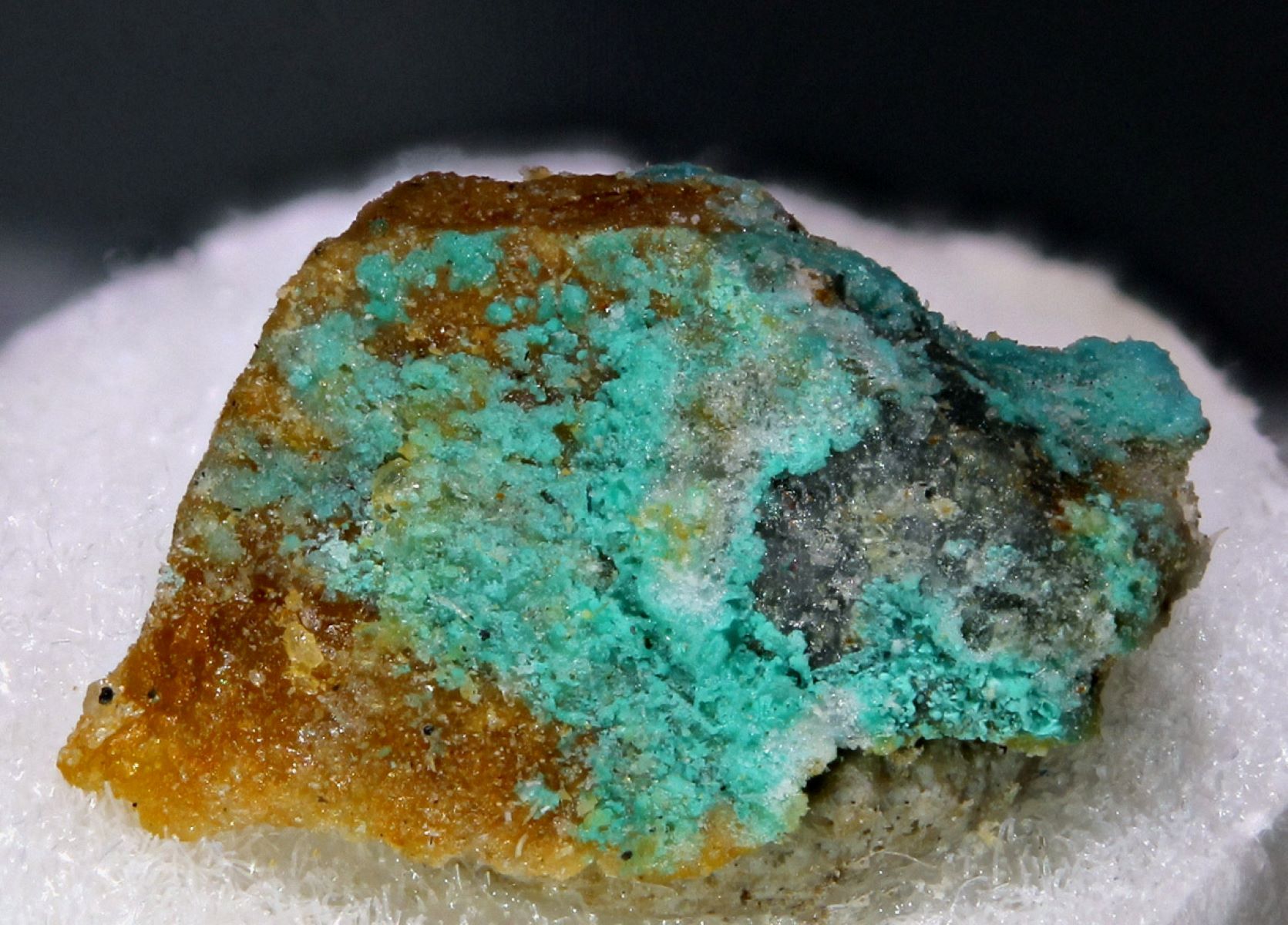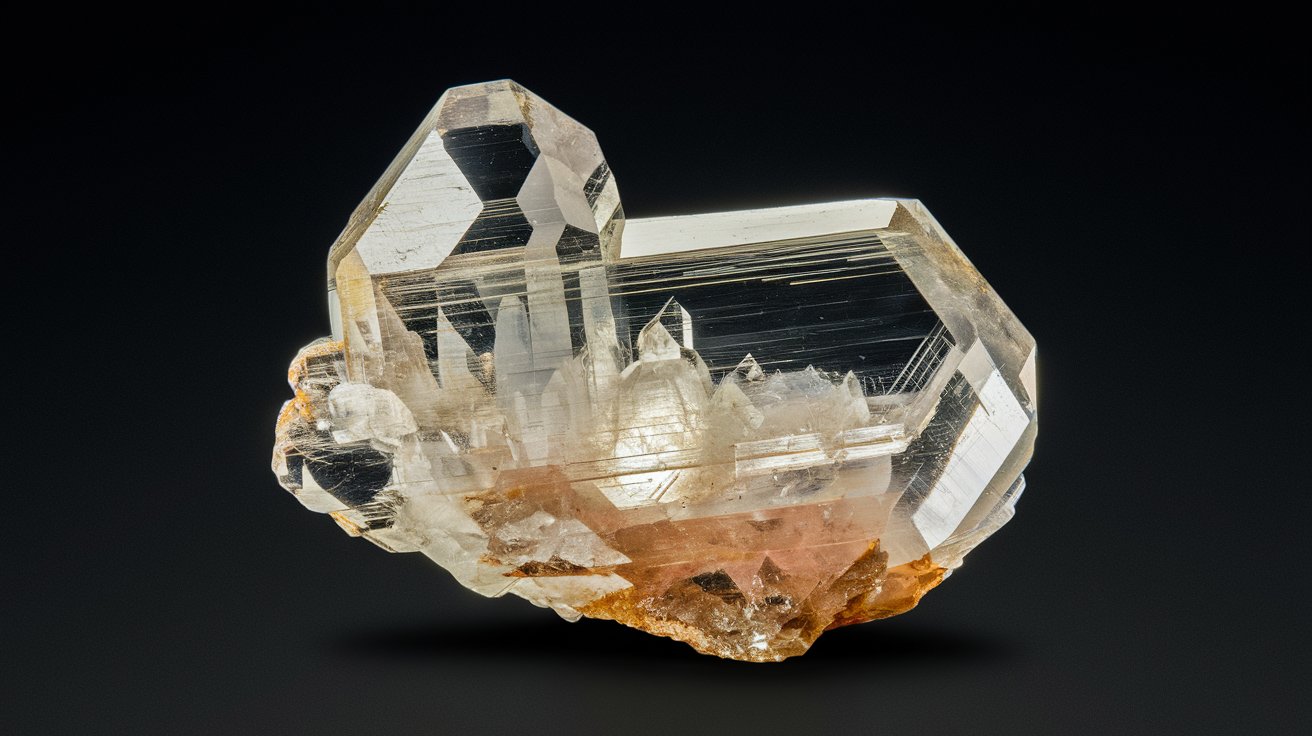
Ever heard of anthonyite? This unique mineral, discovered in 1963, is a hydrous secondary copper halide with a stunning lavender hue. Named after mineralogist John W. Anthony, anthonyite crystallizes in the monoclinic system and boasts a prismatic crystal class. Found primarily in the Centennial mine in Michigan, it forms through the alteration of native copper in basaltic rocks. With a Mohs hardness of 2, it's quite soft and can be scratched easily. Anthonyite's optical properties include pleochroism, showing different colors from various angles. Though not widely used industrially, its copper content makes it an interesting ore. Let's dive into 30 intriguing facts about this captivating mineral!
Key Takeaways:
- Anthonyite is a captivating lavender mineral discovered in 1963. Its unique physical and optical properties, formation process, and association with other minerals make it a fascinating subject for scientists and collectors.
- Anthonyite, named after mineralogist John W. Anthony, forms in basaltic rocks through the alteration of native copper. Its distinctive crystal habits, solubility in acids, and association with other minerals make it a valuable specimen for study and collection.
What is Anthonyite?
Anthonyite is a captivating mineral that has intrigued scientists and collectors alike. Its unique characteristics and formation process make it a subject of great interest. Let's dive into some fascinating facts about this mineral.
-
Chemical Formula: Anthonyite's chemical formula is Cu(OH,Cl)2·3(H2O). This indicates it is a hydrous secondary copper halide mineral.
-
Discovery: First discovered in 1963, anthonyite was found in the Centennial mine in Calumet, Houghton County, Michigan, USA.
-
Name Origin: Named by Sidney A. William in 1963, it honors John W. Anthony, a University of Arizona mineralogist who played a crucial role in its discovery.
Physical Properties of Anthonyite
Understanding the physical properties of anthonyite helps in identifying and studying this mineral. Here are some key aspects.
-
Crystal System: Anthonyite crystallizes in the monoclinic crystal system, one of the six crystal systems in mineralogy.
-
Crystal Class: Its crystal class is prismatic (2/m), indicating its symmetry and orientation in space.
-
Color: Known for its distinctive lavender color, anthonyite stands out among other minerals.
-
Hardness: With a Mohs hardness of 2, anthonyite is relatively soft and can be easily scratched or deformed.
-
Cleavage: Exhibits good cleavage along the {100} plane, allowing it to be split into thin sheets or plates.
-
Tenacity: Anthonyite is sectile, meaning it can be scratched by a knife or other sharp objects.
-
Diaphaneity: This mineral is translucent, letting light pass through but not clearly enough to see through it.
Optical Properties of Anthonyite
The optical properties of anthonyite are crucial for its identification under a microscope. These properties reveal much about its internal structure.
-
Optical Properties: Anthonyite is biaxial (-) with refractive indices nα = 1.526, nβ = 1.602, and nγ = 1.602. It also exhibits birefringence (δ) of 0.076.
-
Pleochroism: Displays pleochroism, where the color appears different when viewed from various angles. It shows rich lavender (X) and deep smoky blue (Y and Z).
-
2V Angle: The 2V angle of anthonyite is approximately 3°, a characteristic used in identifying minerals under polarized light.
Formation and Occurrence
Anthonyite's formation and occurrence provide insight into its geological environment and the conditions under which it forms.
-
Formation: Forms through the alteration of native copper in basaltic rocks, typically in fractures and cavities where chloride-rich groundwater or connate fluids circulate.
-
Similar Minerals: The orthorhombic mineral calumetite forms through the same process as anthonyite, indicating a similar geological environment.
-
Associated Minerals: Often found with tremolite, quartz, epidote, monazite, native copper, cuprite, and paratacamite in the Centennial mine area.
-
Other Localities: Besides the Centennial mine, anthonyite has been found in the Cole mine at Bisbee, Arizona; Villa Hermosa, Sonora, Mexico; Richelsdorf, Hesse, Germany; and Laurium, Greece.
Uses and Handling
While not commonly used industrially, anthonyite's properties and composition make it noteworthy. Proper handling is also essential.
-
Industrial Uses: Although not a primary source of copper, its copper content makes it an ore of copper.
-
Health Risks: No specific health risks are associated with handling anthonyite, but it's generally recommended to handle mineral specimens with care.
-
Solubility: Readily soluble in acids, which can be used to identify or extract its components.
Crystal Habits and Classification
Anthonyite's crystal habits and classification help in understanding its structure and categorization among other minerals.
-
Crystal Habit: Often includes prismatic crystals that are commonly curved along the [001] direction. It can also occur as incrustations.
-
Strunz Classification: In the Strunz classification system, anthonyite is categorized under 3.DA.40, grouping minerals with similar chemical and structural properties.
-
IMA Symbol: The International Mineralogical Association (IMA) symbol for anthonyite is Aty.
-
Crystallographic Forms: Includes its monoclinic structure, providing insight into its internal arrangement of atoms.
-
X-Ray Powder Diffraction: X-ray powder diffraction (XRPD) can analyze the crystal structure of anthonyite by identifying the diffraction patterns produced by its atoms.
Geological Environment and Type Occurrence
The geological environment and type occurrence of anthonyite shed light on its natural habitat and discovery.
-
Geological Environment: Forms through the alteration of native copper in basaltic rocks under specific hydrothermal conditions.
-
Type Occurrence: The type occurrence of anthonyite is at the Centennial mine in Michigan, USA, where it was first discovered and described.
Relationships and Synonyms
Understanding anthonyite's relationships with other minerals and its unique identity is essential for mineralogists.
-
Synonyms: There are no synonyms for anthonyite in mineralogy, as it is a distinct species with its own chemical and structural characteristics.
-
Other Languages: The name "anthonyite" is used in English, but it may have different names or translations in other languages used in mineralogy.
-
Relationships with Other Minerals: Related to other secondary copper minerals like atacamite, which also form through the oxidation of copper minerals in arid, saline conditions.
The Fascinating World of Anthonyite
Anthonyite, with its lavender hue and unique properties, stands out in the mineral world. Discovered in 1963, this secondary copper halide mineral has a monoclinic crystal system and a prismatic crystal class. Its softness (Mohs hardness of 2) and sectile tenacity make it easily scratched or deformed. The translucent nature and pleochroism add to its allure, showing different colors from various angles. Found primarily in the Centennial mine in Michigan, anthonyite also appears in other locations like Arizona, Mexico, Germany, and Greece. While not a primary copper source, its copper content is noteworthy. Handling it with care is advised due to its solubility in acids. Anthonyite’s formation through the alteration of native copper in basaltic rocks highlights its geological significance. This mineral, named after John W. Anthony, continues to intrigue mineralogists and collectors alike.
Frequently Asked Questions
Was this page helpful?
Our commitment to delivering trustworthy and engaging content is at the heart of what we do. Each fact on our site is contributed by real users like you, bringing a wealth of diverse insights and information. To ensure the highest standards of accuracy and reliability, our dedicated editors meticulously review each submission. This process guarantees that the facts we share are not only fascinating but also credible. Trust in our commitment to quality and authenticity as you explore and learn with us.


